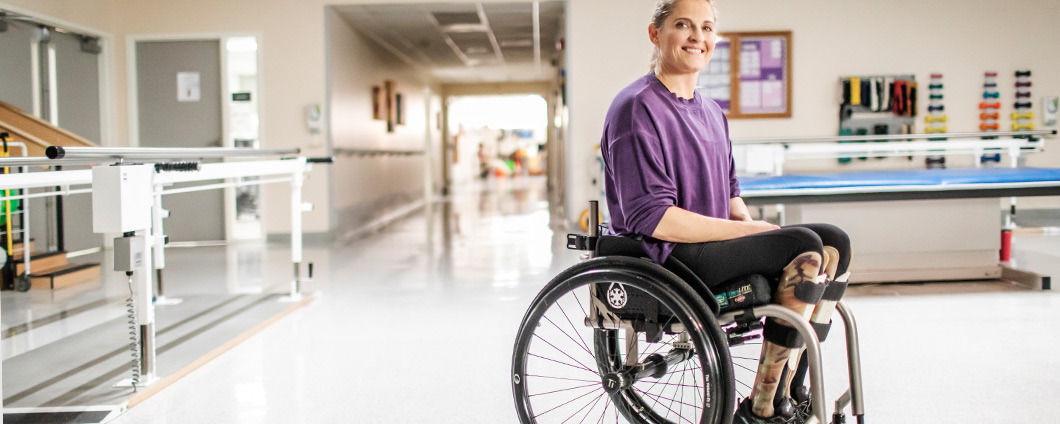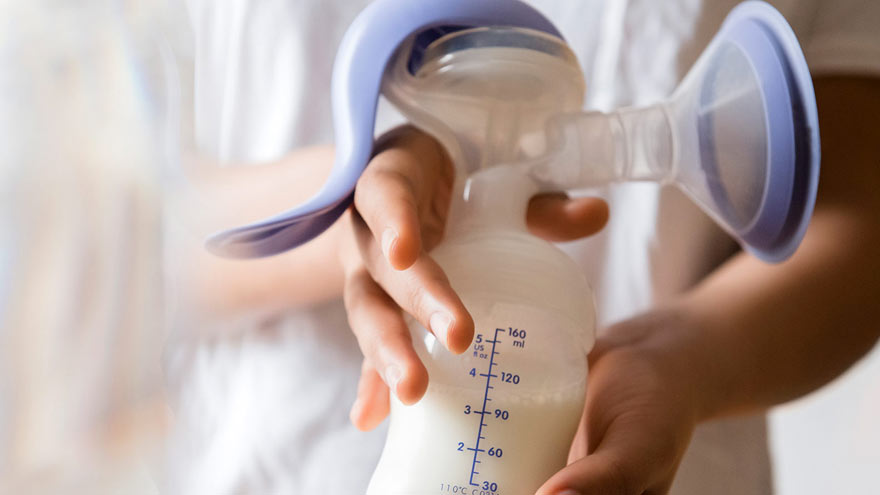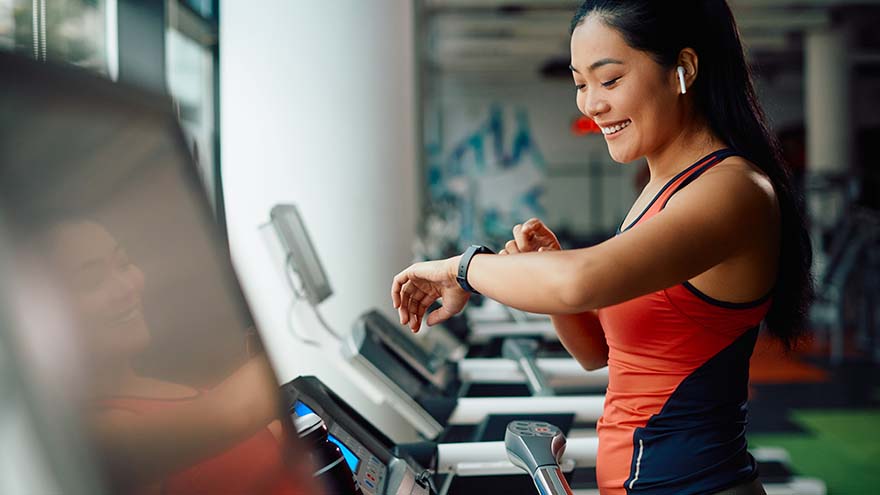Search
-
 Renown Physical Therapy & Rehabilitation - E 2nd.Renown Physical Therapy & Rehabilitation - E 2nd.Hours
Renown Physical Therapy & Rehabilitation - E 2nd.Renown Physical Therapy & Rehabilitation - E 2nd.Hours
Mon-Fri7:15 a.m. - 5:30 p.m.Sat-SunClosed -
How to Safely Store Breast Milk
Breast milk. It's often referred to as liquid gold. And fortunately, it can be safely refrigerated or frozen for later use, which can allow you to be a bit more flexible in your new routine with baby. Whether you're getting ready to return to work, planning for the chance date night out or just exclusively pumping, it's crucial to understand the guidelines for proper breast milk storage. Storing Breast Milk Use clean bottles with screw caps, hard plastic cups that have tight caps or nursing bags (pre-sterilized bags meant for breast milk). Be sure to label each container with the date the milk was pumped and your baby's name if the milk is going to childcare providers. You can add fresh, cooled milk to milk that is already frozen, but add no more than is already in the container. For example, if you have two ounces of frozen milk, then you can add up to two more ounces of cooled milk. For healthy full-term infants, milk can be stored as follows: Room temperature - six to eight hours (no warmer than 77°F, or 25°C). Refrigerator - up to five days at 32°-39°F (0°-3.9°C). Freezer– Varies depending on freezer type. Up to two weeks in a freezer compartment located within the refrigerator. Three to six months in a freezer that is self-contained (standard kitchen fridge/freezer combination) and kept at 0°F (-18°C). Breast milk should be stored in the back of the freezer and not in the door. Six to 12 months in a deep freezer that is kept at -4°F (-20°C). Be sure to leave about an inch of space at the top of the container or bottle to allow for expansion of the milk when it freezes. Thawing Breast Milk Place frozen breast milk in the refrigerator to thaw (about 24 hours) then warm by running warm water over the bag or bottle of milk and use it within the next 24 hours. If you need it immediately, remove it from the freezer and run warm water over it until it's at room temperature. Never microwave breast milk and do not refreeze it. Once your baby has started to drink from the bottle, you should use it within one hour. You may find that different resources provide different recommendations about the amount of time you can store breast milk at room temperature, in the refrigerator and in the freezer. Talk to your doctor or lactation consultant if you have any concerns or questions.
-
4 Breastfeeding Tips for New Moms
While breastfeeding is natural, it's not always easy. We asked Certified Lactation Counselor Sarah Mitchell for some tips to help make the process easier for mom and baby. From increased infant immunity to improved maternal health and well-being, the benefits of breastfeeding are many. Still, only 60 percent of U.S. moms in the United States continue to breastfeed past their baby's first six months. There are for many reasons for why moms stop, including the mother's their need to return to work. We reached out spoke to Sarah Mitchell, a certified lactation counselor at The Lactation Connection at Renown, for some expert advice. Tip 1 At first, it's normal to expect obstacles. Even in cultures where close to 100 percent of moms breastfeed, they can experience issues, including getting the baby to "latch on," sore nipples, and milk production. In addition, it sometimes can take several weeks for mom and baby to get comfortable. Tip 2 Line up a coach, even before the baby is born. This can be a professional lactation coach, family member, or friend who is experienced and encouraging. While online videos can be helpful, most new moms need the one-on-one guidance that a coach can provide. Renown offers outstanding resources in its Lactation Connection center, including expert consultants, products, and support. Tip 3 Well ahead of the due date, set up a support network of friends, family members, or community groups such as La Leche League. Women historically have relied on extended support systems to help them with raising children, and breastfeeding is one of those areas that, while natural, still needs encouragement from the women who’ve been there. Tip 4 Don’t get discouraged if you need to supplement at times with formula. This, too, as it turns out, is not uncommon in other cultures. In other parts of the world, babies are given beverages and foods such as tea, broth, soup, juice, mashed bananas, and papaya. The American Academy of Pediatrics recommends supplementation only with approved formula -- but the point is, it’s ok to supplement if you need to. Finally, don’t forget the importance of breastfeeding for connecting with your baby. It’s essential to maintain breastfeeding over the weekends, preferably “on-demand,.” and will keep that special bond strong after you have returned to your job.
-
Breast Feeding Doesn't Have To Mean Sore Nipples
If you think sore nipples are just a normal part of breastfeeding, think again. Robin Hollen, APRN, and Breastfeeding Medicine Specialist, says that nursing can be an enjoyable experience for mom and baby without pain and discomfort. A top concern of nursing moms within the first week after delivery is how to prevent sore nipples. Even moms who’ve nursed before struggle with this common issue. While many women think it is a regular part of the nursing experience, it is actually a sign that something isn’t quite right. “Nursing your baby should be enjoyable,” says Robin Hollen, Breastfeeding Medicine Specialist with Renown Health. For over 30 years Robin has been supporting moms to breastfeed. Below she shares some valuable information and tips, helping you create a happy and healthy breastfeeding experience for you and your baby. What causes sore nipples? The most common cause of sore nipples involves incorrect latching. For a proper latch, a baby’s mouth takes in the entire nipple and some of the breast, so that the nipple rests at the back of the mouth where the palate is soft. With an improper latch, the mouth may slip down to the tip of the nipple while the baby nurses. This constant pressure on your sensitive skin may cause discomfort and pain. A board-certified lactation consultant can help assess if your baby is latched correctly and troubleshoot your breastfeeding concerns. Less common causes of sore nipples include: • Improper tongue placement of baby • Clenching • Incorrect breast pump use How can a mother prevent sore nipples from an improper latch? Breastfeeding is a learning experience for both mom and baby. Ask for help with the latch so your baby learns it correctly and maintains its depth. In the past, new mothers were surrounded by a community of women — their own mothers, grandmothers, or other family and friends — to provide assistance and guidance with every latch at the beginning of an infant’s life. In today’s culture, new moms can find themselves on their own with no extended family to lend their knowledge. Nurses, pediatricians and lactation consultants now fill that role; they are the eyes and hands along with the much-needed experience to guide new mothers. Our Breastfeeding Medicine experts assist nursing moms with latch every day. Even a single visit with a lactation consultant observing your breastfeeding baby can provide valuable insight on achieving, and maintaining, the proper latch - preventing future nipple soreness and discomfort. How to heal sore nipples from breastfeeding To heal sore nipples, you must first fix the cause, and correcting the latch prevents further damage. A lactation consultant can also help you address the pain. Below are some breast healing tips: • Your own expressed breast milk is excellent to rub into the nipple for anti-bacterial protection. • For those moms who need more lubricant or fat than breast milk offers, use a lanolin or a cream that is labeled safe for the baby. • Soothies are a gel pads providing comfort in between feedings, but should not be used with lanolin products. • Breast shells, not to be confused with shields, can guard the nipples from irritation or pressure in between feedings. If you have more questions about preventing and healing sore nipples or general breastfeeding concerns, talk to your pediatrician or a Renown Health Breastfeeding Medicine specialist at 775-982-6365.
Read More About Breast Feeding Doesn't Have To Mean Sore Nipples
-
Generic Drugs – What You Need to Know About Them
Without a doubt, taking medications can not only be expensive, but also confusing. In the United States, generic prescriptions are widely used, with 9 out of 10 people choosing them over a name brand. Pharmacists are a great resource to help us understand the benefits and side effects of any medication. We asked Adam Porath, PharmD, Vice President of Pharmacy at Renown Health, to answer some common questions about generic drugs. What is a generic drug? A generic drug has the same active ingredients of brand-name drugs. Brand-name drugs have a patent (special license) protecting them from competition to help the drug company recover research and development costs. When the patent expires other manufacturers are able to seek approval for a generic drug. However, the color, shape and inactive elements may be different. Per the U.S. Food & Drug Administration (FDA), a generic medicine works in the same way and provides the same clinical benefit as its brand-name version. Why do they cost less? Generic drug makers do not have the expense of costly development, research, animal and human clinical trials, marketing and advertising. This savings is passed on to the public. Also after a patent expires, several companies will compete on a generic version of a drug, further driving down prices.
Read More About Generic Drugs – What You Need to Know About Them
-
How to Manage and Prevent Tendonitis
Tendonitis occurs when a tendon in your body is inflamed or irritated. This painful condition can impact your day-to-day activities, but can be managed and prevented. Luis Palacio, MD, shared some insights into how to manage tendonitis. Overuse and Repetitive Motion Tendons are complex tissues in our body that connect muscles to bones, allowing us to move. Unfortunately, sometimes these tendons become inflamed, worn down or injured, a condition called tendonitis. Symptoms of tendonitis include pain or dull ache, tenderness and mild swelling at the site. While tendonitis can be caused by a sudden injury, it is more commonly seen in frequent motions, including: Repetitive motions in exercise, work or other physical activities. Awkward positions in a movement, including poor posture. Forced movements that strain your body. Sudden increase in frequency of movement or level of difficulty, including little to no recover time between new activity. Shoes without proper support or hard surfaces, such as concrete floors. Evaluation is Key If you suspect that you have tendonitis and it does not resolve on its own after a few days, you should get it evaluated by a primary care or sports medicine doctor. They can make recommendations to aid your recovery and refer you to the right sub-specialist if needed. With some intentional actions, you can help reduce the risk of tendonitis with the following suggestions: Add variety: Mixing up the type of exercise you do will help prevent repetitive motions that can result in overuse. Stretch and condition: Make sure the keep up with proper stretching and muscle strengthening to support your physical activities. Do it right: Make sure that the way you are completing exercise or work-related physical activities is correct. Seek out a professional for lessons or guidance if you are unsure.
-
How to Treat a Sprain or Strain
Injuries happen to everyone. They are caused by participating in sports, recreational activities like hiking, and even by accidentally stepping off a curb wrong. If you experience a sprain or strain, the first few days are often the most painful. Renown Sports Medicine physicians Luis Palacio, MD and Brandon Hockenberry, MD walked us through what to do after an injury. Listen to Your Body See a medical professional right away if: You know or suspect that a bone is broken You are having difficulties putting full weight on a joint of the leg Pain or swelling is severe There is a sign of an infection, such as redness and warmth in the joint The First 24-72 Hours Joint sprains tend to swell more than muscle strains. You can use ice as needed for comfort and to relieve any pain, but do not use ice for more than 15-20 minutes at a time. Ice and NSAIDs (such as ibuprofen) can help prevent excessive swelling and mask the pain, but they do not speed recovery. Some research shows that overuse of ice actually delays recovery. During the first 24-72 hours, your injury will go through an inflammation phase. Inflammation is your body’s natural way to dispose of dead tissue cells, build new healthy structures, and hopefully heal even stronger than before.
-
From Patient to PAR: Jodee’s Road to Renown
When faced with chronic pain, that agonizing feeling of dread can be overwhelming to anyone, let alone a cancer survivor. Take Renown Patient Access Representative (PAR) Jodee Elder, for example. As she was receiving radiation treatments while Fighting the Good Fight against cancer, she started to experience pain at the base of her spine that ended up progressing to lower spine arthritis. On top of trying to beat cancer, the last thing she needed to deal with was the intense pain that was affecting her everyday life – and she deserved a solution that was going to provide her with the relief she needed for the long term. That’s where the Special Procedures – Pain Management department at Renown Rehabilitation Hospital – a part of Renown Spine, Sports & Pain Management – stepped in. But the team of doctors, nurses and imaging technologists Special Procedures had more on their minds for Jodee beyond pain relief. As a Renown employee, they knew what a best-in-class PAR Jodee was in her unit at the time, and they wanted that level of passion as the face of their department. Little did they know that Jodee shared the exact same sentiments. From Patient... As a skilled Patient Access team member since 2018, Jodee knows first-hand how important it is to set patients up for success before, during and after an intimidating procedure. She began her Renown career as a Pre-Registration PAR, eventually taking her expertise to Surgical Preadmission. During her years on those two teams, she honed her craft as a personable, patient-facing guide, continually going above and beyond for every patient and employee. But there was one problem: the chronic pain in her lower back that happened as a result of her radiation treatments. This pain ended up being diagnosed as lumbar spondylosis, a degenerative spinal condition that causes arthritis in the back. And when you work a desk job, back pain can be especially excruciating. When 2023 rolled in, Jodee knew she needed to try something new for her pain, something that would give her relief once and for all. After some research and advice from her doctor, she learned about Special Procedures, a team at Renown Rehabilitation Hospital offering pain management options that she wasn’t previously familiar with. Eventually, her care teams discovered that a bilateral radiofrequency nerve ablation may give her the relief she needed. Throughout the entire process, Jodee recalls feeling supported every step of the way with an experience personalized just for her. Despite being nervous at first, she was quickly put at ease by the caring nature of her pain management team. “From scheduling and the pre-operative process to the procedure and recovery experience, I often think about the amazing care I received from the entire team,” said Jodee. “Dr. Casey Keating and the nurses were with me at every point of my procedure. This was such a personal experience. I was treated like I was their only patient for the day, and everyone tried hard to alleviate any anxiety, stress or worries I had by comforting me with things like music, rubbing my leg and one-on-one conversations throughout the process.” Since her procedure, Jodee has been virtually pain-free, happily noting that she hasn’t taken any pain relievers from that day on. She gained a lot of coping skills from her care team that, as fate would have it, would inspire her to help other patients who are preparing for their own procedures. ...To Pain Management Patient Access... Before her first procedure even began, Dr. Keating was already told all about Jodee by a former coworker, who applauded her organizational skills. He very quickly was impressed by her work ethic and experience as a PAR. While she was undergoing her procedure, Jodee couldn’t help but notice how the nurses went above-and-beyond for her and treated her like she was a part of the team – even before they knew her. She immediately felt at home in Special Procedures, not only because of the level of care the team provided but also because of how much her life changed after receiving the much-needed relief for her back pain. “When I came for my first injection, Dr. Keating introduced me to the nurses as ‘the PAR we want over here,’” said Jodee. “I was on the fence regarding leaving my current PAR role, but after my experience with Special Procedures, the team really sold me on the opportunity. I immediately thought, ‘I want to be a part of this.' They were so appreciative of me from the start." And the rest is history. On Nov. 17, 2023, Jodee began her journey as the PAR dedicated solely to Special Procedures. On a typical day, you can find Jodee interacting with patients ahead of time to make checking in more enjoyable, helping patients through the pre-registration process, scheduling our Renown-employed and community providers for each procedure, checking up on authorizations, and of course, leaving a positive impact on everyone she connects with. In addition, she is known as the Special Procedures “chart master” as the main employee organizing each patient’s chart. But her duties as a PAR go beyond the desk. As a former patient herself, she has the unique ability to relate to Special Procedures patients who are worried and anxious about the road ahead. “When nervous patients come in, I can connect with them on a personal level and support them with suggestions that helped me out when I was going through my procedure,” said Jodee. “I love being patient-facing. You wouldn’t believe how many patients we’ve helped enter their procedures calmer than they were before and get the relief they need. I enjoy taking care of these patients – that's why I got into healthcare. I wanted to make a difference.” ...And Beyond Today, Jodee has been a proud PAR in Special Procedures for almost a year. She has thoroughly enjoyed her time with her fellow team members, who have been nothing short of a family to her in more ways than one. “This team is incredibly supportive of me both at work and in my personal life,” said Jodee. “When my mother passed away, they sent me a beautiful flower arrangement and a card that they all signed. The day I came back to work, they all hugged me and said they were always there for me if I wanted to talk. It’s like a big family here.” In her experience as a patient and a PAR, Jodee lives by one main motto: start a chain reaction. As she emphasizes, it only takes one of us to start a chain reaction to affect patients and the community. In Special Procedures, it starts with Jodee. And in life, she tells her kids to be that chain reaction starter. Outside of work, Jodee enjoys spending time with her kids and is happily anticipating the arrival of her grandson, who was conceived very close to the day that her mother passed away. She always makes time to create new memories with her family, including “tattoo roulettes,” where they each put a few tattoo ideas in a hat and pick one at random; they then go out and each get matching tattoos as a testament to their love for one another. “When one life ends, another life blooms,” said Jodee. If you are interested in receiving care with Renown Spine, Sports & Pain Management, speak with your provider about a referral to our specialized team. In the meantime, we encourage you to learn more about navigating your pain management care with Renown Health.







